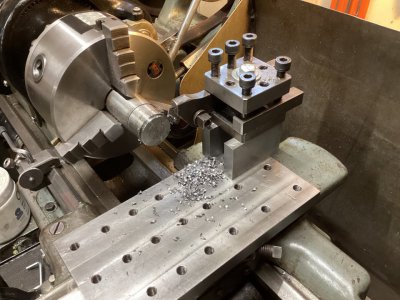My top is thicker. Not by intent. My fulcrum is also wider. Not by intent either. Block was thicker. The slot for the blade is less than a thou of clearance. It will only go in if squared up, but slides fore and aft easily.Hmm, my first prototype did not include the rear expansion slot. After a few months some stress cracks began to show on the top shelf just where the front slot ended. This told me that I needed some flexure to reduce stress so I incorporated the rear expansion slot. Since then, no more stress cracks and there seemed to be better clamping force applied to the blade. It has now been over 25 years and not a single stress line has shown up so I think the rear slot is important.
But you cannot clamp with a hex key. It takes a 3/16" Allan socket on a 3/8" drive ratchet to clamp the blade in place. 10-15 lb/ft of torque to close about .0005". I have no opinion about that.

